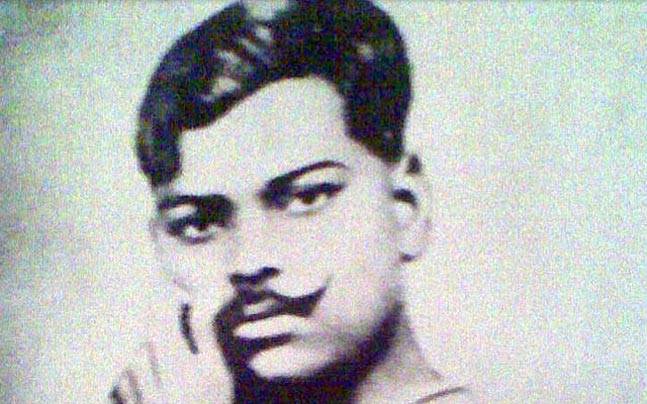
Prominent a long ways past his lifetime as a valiant opportunity warrior and brave progressive, Chandrashekhar Azad was an eminent identity in the flexibility battle of India. His sheer patriotism and undisputed mettle turned into the wellspring of motivation for some, others like Bhagat Singh. He was otherwise called the progressive face of the nation and was the originator of the Hindustan Socialist Republican Association, alongside other opportunity warriors like Sukhdev and Rajguru.
Early life
Azad was conceived as Chandrashekhar Tiwari in a town of Madhya Pradesh on 23 July 1906. His folks were Pandit Sitaram Tiwari and Jagrani Devi, the family hailing from the Unnao area of Uttar Pradesh. He finished his initial instruction in Bhavra and to satisfy his mom's desire, he went to Varanasi Sanskrit Pathshala. At 15 years old, he was profoundly moved by the Jalianwala Bagh episode, which built up his nationalistic suppositions early. He joined the Non-Cooperation Movement propelled By Gandhiji, yet was soon captured by the British. It was amid his trial that he obtained the monicker Azad (signifying "free"), which was the manner by which he addressed the judge when asked his name. He later took a pledge that he could never be captured in his life and would hold onto passing as a free soul.
Forceful progressive
Azad was profoundly harmed by the Chauri Chaura episode and the subsequent suspension of the Non-Cooperation development by Gandhi. He chose to turn forceful and radical, needing to acquire freedom for his nation at any cost. He was a staunch devotee to communism and met Ram Prasad Bismil at the appropriate time. Bismil was the organizer of the Hindustan Republican Association that pointed towards a free nation with break even with rights for everybody, regardless of societal position, station or statement of faith. Bismil enjoyed Azad and included him to be an individual from this progressive association. His activity was to gather reserves for the gathering by any methods, which in some cases even prompted burglarizing government properties. Aside from this, he and his partners were associated with a few savage designs against the British and these were executed from Shahjahanpur.
Arrangement of HSRA
Azad had an earned a few devotees that included Shaheed Bhagat Singh, Sukhdev, Rajguru and others. Their fundamental occupation was to hassle the British government to a degree with the goal that they would be constrained to leave India. In 1924, when every one of the authors of HRA were captured and condemned to death, Azad assumed the liability to revamp it, renaming it as Hindustan Socialist Republican Association. The general population who helped him in doing as such were famous identities in Indian opportunity battle like Mahaveer Singh, Sheo Verma, and Bhagwati Charan Vohra.
Demise
On 27 February 1931, Azad went to meet one of his partners in Allahabad's Alfred Park yet soon was encompassed by the police. Obviously, he had been deceived by one of his own. A gunfight took after, yet there was no chance Azad could have left it. Decided not to get captured, he slaughtered himself with the last slug of his weapon before the British could even touch him.
Azad's document is as yet kept in the CID base camp of Lucknow. The gun which he used to shoot himself is safeguarded in the Allahabad Museum. A few motion pictures have been made on him, as Rang De Basanti, Shaheed Bhagat Singh, among others